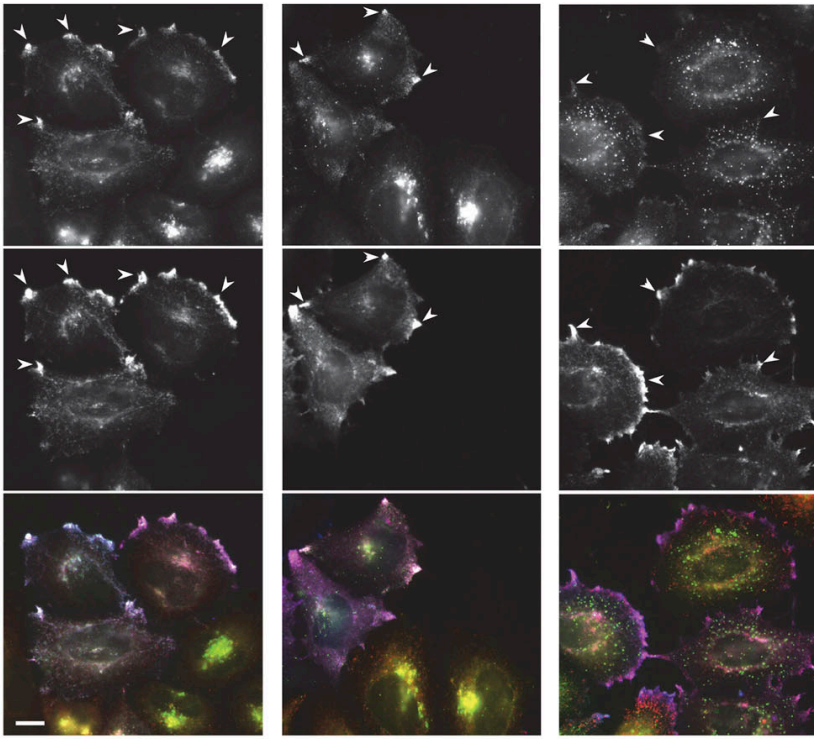
Adaptor protein (AP) complexes are an ancient family of heterotetramers, which select cargo for packaging into transport vesicles at various locations in the cell. The AP-1 adaptor is arguably the most indispensable of the five AP complexes. It is the only one that is found in all eukaryotes, and knocking it out in animals is invariably embryonic lethal. It has several medical connections, including genetic disorders caused by mutations in some of the AP-1 subunits and hijacking of the complex by pathogens, most notably HIV. In spite of AP-1’s importance, its function is not well understood.
To look directly at AP-1 function, stably transduced HeLa cells coexpressing tagged AP-1 and various tagged membrane proteins were generated. Live cell imaging showed that AP-1 is recruited onto tubular carriers trafficking from the Golgi apparatus to the plasma membrane, as well as onto transferrin-containing early/recycling endosomes. Analysis of single AP-1 vesicles showed that they are a heterogeneous population, which started to sequester cargo 30 min after exit from the ER. Vesicle capture showed that AP-1 vesicles contain transmembrane proteins found at the trans Golgi network and early/recycling endosomes, as well as lysosomal hydrolases, but very little of the anterograde adaptor GGA2. Together, these results support a model in which AP-1 retrieves proteins from post-Golgi compartments back to the TGN, analogous to COPI’s role in the early secretory pathway. It is proposed that this is the function of AP-1 in all eukaryotes.

